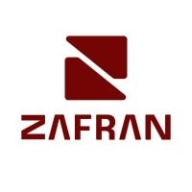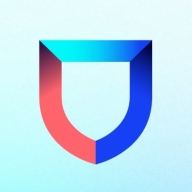


Fortra's Alert Logic MDR and Lacework FortiCNAPP compete in cybersecurity, with each offering unique benefits. Lacework FortiCNAPP has an advantage in cloud security features, providing substantial value for cloud-focused enterprises.
Features: Fortra's Alert Logic MDR offers real-time threat intelligence, robust incident response, and effective intrusion detection, suitable for businesses prioritizing immediate threat mitigation. Lacework FortiCNAPP provides comprehensive cloud-native security, workload and container security, along with compliance assessments, appealing to organizations utilizing cloud environments.
Room for Improvement: For Fortra's Alert Logic MDR, improvements could include expanding cloud security capabilities, streamlining integration with other cloud platforms, and enhancing user interface customization. Lacework FortiCNAPP might improve by simplifying initial setup processes, expanding support documentation, and refining integration with third-party security tools.
Ease of Deployment and Customer Service: Fortra's Alert Logic MDR features a straightforward deployment with accessible customer support, facilitating quick setup. Lacework FortiCNAPP offers a flexible deployment model for cloud environments, requiring more initial setup but aligning well with cloud-based operations.
Pricing and ROI: Fortra's Alert Logic MDR is characterized by competitive pricing and a strong return on investment through its effective threat management. Lacework FortiCNAPP may involve higher upfront costs but offers significant long-term ROI due to its robust cloud security capabilities and scalability.
| Product | Market Share (%) |
|---|---|
| Zafran Security | 1.0% |
| Fortra's Alert Logic MDR | 0.6% |
| Lacework FortiCNAPP | 1.3% |
| Other | 97.1% |



| Company Size | Count |
|---|---|
| Small Business | 4 |
| Midsize Enterprise | 2 |
| Large Enterprise | 6 |
| Company Size | Count |
|---|---|
| Small Business | 4 |
| Midsize Enterprise | 4 |
| Large Enterprise | 3 |
Zafran Security integrates with existing security tools to identify and mitigate vulnerabilities effectively, proving that most critical vulnerabilities are not exploitable, optimizing threat management.
Zafran Security introduces an innovative operating model for managing security threats and vulnerabilities. By leveraging the threat exposure management platform, it pinpoints and prioritizes exploitable vulnerabilities, reducing risk through immediate remediation. This platform enhances your hybrid cloud security by normalizing vulnerability signals and integrating specific IT context data, such as CVE runtime presence and internet asset reachability, into its analysis. No longer reliant on patch windows, Zafran Security allows you to manage risks actively.
What are the key features of Zafran Security?
What benefits can users expect from Zafran Security?
In industries where security is paramount, such as finance and healthcare, Zafran Security provides invaluable protection by ensuring that only exploitable vulnerabilities are addressed. It allows entities to maintain robust security measures while allocating resources efficiently, fitting seamlessly into existing security strategies.
Fortra's Alert Logic MDR specializes in threat detection and response with features like log access and user-friendly notifications. It is used primarily in extensive e-commerce deployments for network protection.
Fortra's Alert Logic MDR provides a unified interface with comprehensive search capabilities, immediate log access, and efficient reporting tools. Users benefit from accurate scanning, automated security warnings, and rapid response times, supported by SOCs for global visibility. The technology employs human expertise for enhanced threat detection and prevention, with a hardware setup designed to avoid virtual environment issues. However, there's a need for improved error tracing, intuitive navigation, and stronger analytical automation within the platform. Enhancements in setup documentation and user interfaces are desired, alongside demands for a built-in EDR and better alert management systems.
What are the key features of Fortra's Alert Logic MDR?Fortra's Alert Logic MDR is widely implemented across public and private sectors for robust network protection. It supports large-scale e-commerce operations, offering advanced detection capabilities with AI and machine learning. Security scanning, intrusion detection, and vulnerability analysis in Kubernetes are key applications.
Lacework FortiCNAPP provides robust cloud security, combining vulnerability management and multi-cloud insight with user-friendly controls, machine learning detection, and compliance support.
Lacework FortiCNAPP specializes in cloud security by merging machine learning anomaly detection with agent-based vulnerability management to offer detailed alerts and compliance reports. Its comprehensive approach allows continuous monitoring across AWS and Kubernetes, providing insights from an attacker's perspective. The platform offers automation and seamless Slack integration, facilitating collaborative and efficient cloud security management. Users value its ability to handle multi-cloud environments and scan IAC scripts, configurations, and compute nodes across AWS and GCP.
What are the key features?Organizations across sectors leverage Lacework FortiCNAPP for cloud security, focusing on compliance, security posture, and vulnerability management. It is widely used for monitoring AWS and Kubernetes environments, scanning IAC scripts, configurations, and securing compute nodes. It supports multi-cloud security posture management and log ingestion, enabling companies to maintain strong cloud infrastructures without dedicated security layers.
We monitor all Vulnerability Management reviews to prevent fraudulent reviews and keep review quality high. We do not post reviews by company employees or direct competitors. We validate each review for authenticity via cross-reference with LinkedIn, and personal follow-up with the reviewer when necessary.